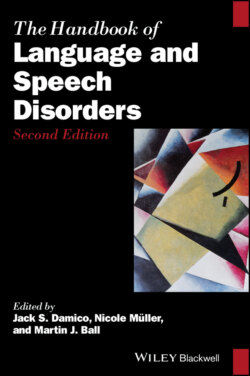Читать книгу The Handbook of Language and Speech Disorders - Группа авторов - Страница 37
2.8 Concluding Statements
ОглавлениеThis chapter endeavors to showcase, as comprehensively as space limitations permit, significant pieces that make up the diversity training puzzle in the theory and practice of speech and language pathology. A concluding statement would identify sociology, ethnography, psychology, applied linguistics, and communication studies as the backbone structure feeding multilingual/multicultural issues relevant to the training of speech language therapists. A more in‐depth coverage and specific suggestions on how these perspectives can be utilized along each specific phase of the clinical practicum is beyond the scope here. It is felt that an overarching approach that succinctly summarizes relevant issues is the first place for a naïve clinician to start their ascent to well‐targeted cultural and linguistic efficacy as part of their clinical repertoire. Last but not least, curiosity, and a thirst for new knowledge, or in other words a knack for research, are also imperative to meet the code of ethics requirement for lifelong learning.
Whether that is something a clinician will do in the end, or not, is best answered by Ingram (2012, p. 3):
The linguist David Crystal once raised the question of whether or not a monolingual English‐speaking … (SLP) would ever need to know something about Swahili. The answer, of course, is a definite yes, no or maybe. Reasons why she should, include the fact that it is interesting to linguists and SLPs, she might move to a Swahili‐speaking country one day, she might develop an interest in Swahili folk music and culture or she might have a Swahili‐speaking client on her caseload. Reasons why she should not, include she might not like linguistics, never move to a Swahili‐speaking country, care for international music or ever see a Swahili speaking client. That leaves us with maybe.
